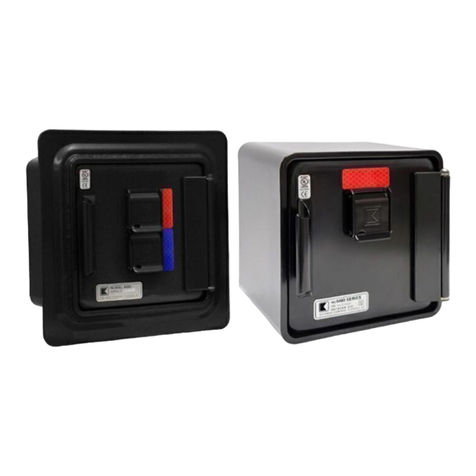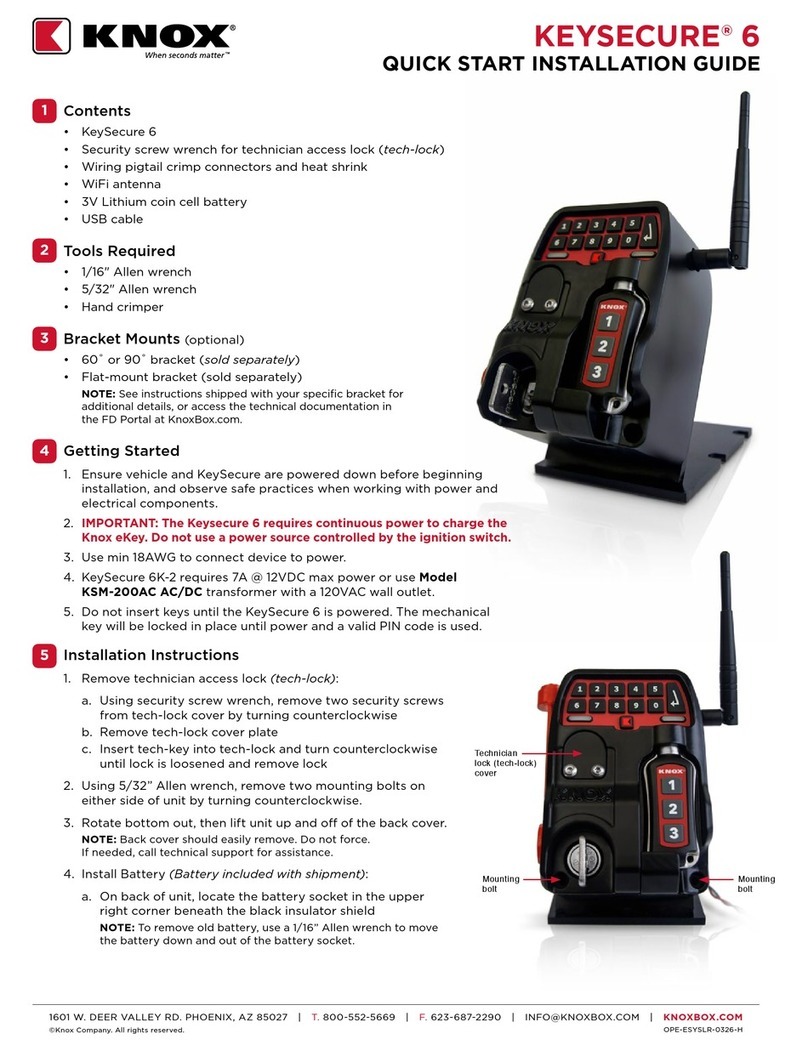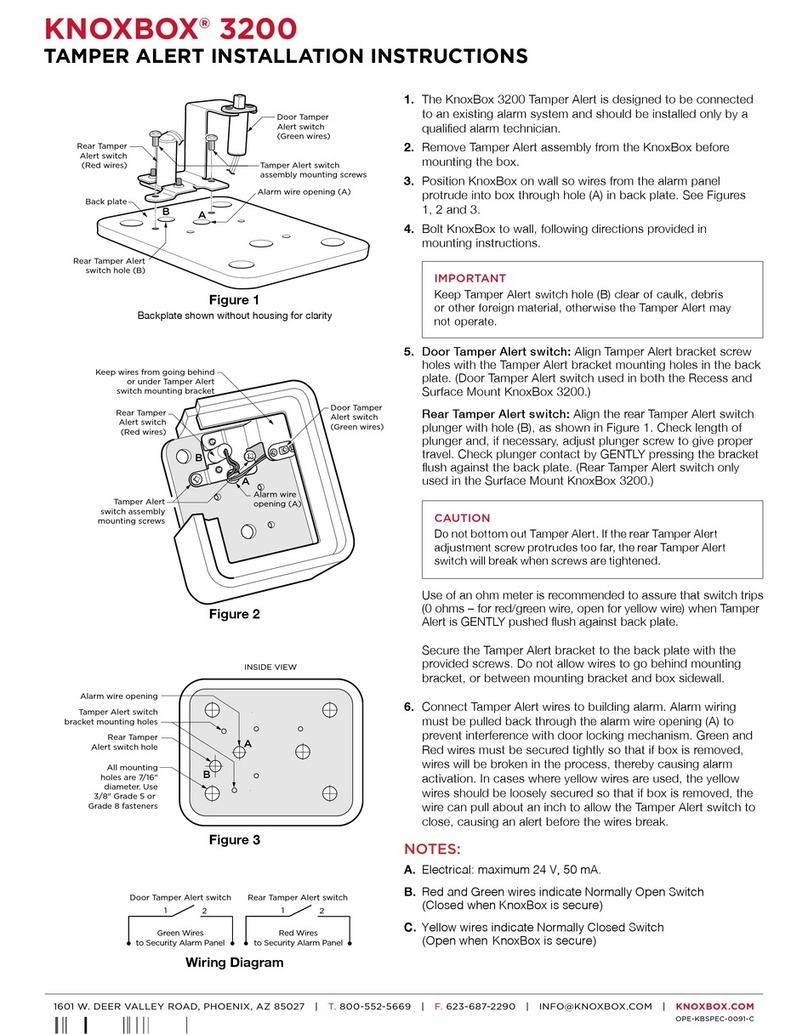
HOW TO INSTALL THIS ALARM - MODEL 7200
*NOTE – READ “WHERE TO INSTALL YOUR CO ALARM” PRIOR
TO INSTALLATION
Prior to installation, find the pair of self-adhesive labels included with this CO
alarm. On each label write in the phone number of your emergency responder
(e.g., 911) and a qualified appliance technician. Place one label near the CO
alarm, and the other label in the "fresh air" location you plan to go if the
alarm sounds.
*NOTE: ACTIVATE ALARM PRIOR TO PLUGGING INTO OUTLET
1. Activating the Battery. Move the
activation switch to the ACTIVATED
position. If necessary, you may use a
small tool to help activate switch if
needed. Once unit is activated, it
cannot be turned off, only
permanently deactivated. (Fig. 1 )
*NOTE: Alarm will beep and will
announce that it has been
activated, both audibly and
visually. Please follow those
directions.
2. Test the CO alarm by pressing the
“Test/Reset” button.
3. This alarm should be installed in a
standard 120V non-switchable
outlet. If the outlet is mounted
horizontally, the plug may be
rotated 90for installation.
*NOTE: Do not rotate the alarm
while it is plugged in, as it may
cause damage to the unit.
4. To minimize the risk of permanent
damage, this alarm should not be
plugged into an outlet which is
higher than 6 feet (1.8 meters)
from the floor.
HOW TO PERMANENTLY DEACTIVATE THIS ALARM
*NOTE – DEACTIVATION IS PERMANENT, AND CANNOT BE REVERSED
This CO alarm contains a sealed-in, non-replaceable / non-removeable battery.
Once it reaches the end of its service life, or after 10 years, whichever comes
first, the unit will alert you that it needs to be replaced, and you will need to
install a new CO alarm.
5. You can permanently deactivate the unit by using a tool to break the tab
underneath the cross-hatched area and moving the activation switch
to the DEACTIVATED position. (Fig. 2)
MODEL NO. 7200
SINGLE STATION CO ALARM
120VAC~, 0.01A, 60Hz
3055574
ALARM GUIDE:
Audio Alerts
4 “BEEPS” – CO ALARM
2 “BEEPS” Every
30 Seconds – End of
Life/Replace
1 “BEEP” Every
30 Seconds – Error/Replace
ALARM RESPONSE
TIMES:
70 ppm CO Concentration
60-240 minutes
150 ppm CO Concentration
10-50 minutes
400 ppm CO Concentration
4-15 minutes
CARBON MONOXIDE CANNOT
BE SEEN OR SMELLED BUT CAN
KILL YOU.IF ALARM SIGNAL
SOUNDS: 1. OPERATETEST/SILENCE
BUTTON. 2. CALL YOUREMER GENCY
SERVICES (FIRE DEPARTMENT OR
911). 3. IMMEDIATELY MOVE TO
FRESH AIR -OUTDOORS OR BY AN
OPEN DOOR/ WINDOW.
MAINTENANCE AND TESTING:
ALARM IS SEALED, WITH NO
SERVICEABLE PARTS.
BATTERY IS NOT REPLACEABLE.
CONSTANT USE AT HIGH OR LOW
TEMPERATURES OR HIGH
HUMIDITY MAY REDUCE
BATTERY LIFE. TEST WEEKLY.
GENTLY VACUUM MONTHLY. TEN
YEARS AFTER INITIAL POWER UP,
THIS UNIT WILL “BEEP” TWICE
EVERY 30 SECONDS, AND “END
OF LIFE - REPLACE UNIT” WILL
APPEAR ON THE DISPLAY,
INDICATING IT IS TIME TO
REPLACE THE UNIT.
REPLACE IMMEDIATELY! IT
WILL NOT DETECT CO IN THIS
CONDITION.
TO ORDER REPLACEMENT
USER’S MANUAL ORTO
RETURN ALARM CALL
CONSUMER AFFAIRS:
1-800-XXX-XXXX
www.knox.com
Manufactured in Mexico
WARNING!
HOW TO ACTIVATE
ALARM:
1) TO ACTIVATE
ALARM, MOVE
SWITCH ABOVE TO
THE “ACTIVATED”
POSITION.
2) LISTEN FOR
ACTIVATION
MESSAGE.
3) TO ENSURE ALARM
IS ACTIVATED,
PRESS “TEST/
RESET” BUTTON
AND LISTEN FOR
TEST MESSAGE.
HOW TO DEACTIVATE
ALARM:
1) TO DEACTIVATE ALARM,
USE A SCREWDRIVER
TO REMOVE TAB IN
CROSS-HATCHED
AREA ABOVE.
2) LISTEN FOR
DEACTIVATION
MESSAGE.
3) ONCE DEACTIVATED,THE
ALARM CANNOT BE
REACTIVATED.REPLACE
IMMEDIATELY. IT WILL
NOT DETECT CO
IN THIS CONDITION.
DEACTIVATED ACTIVATED
BREAK TAB TO
DEACTIVATE
KNOX COMPANY
1601 W. DEER VALLEYRD.
PHOENIX, AZ 85027
Conforms to UL STD 2034
Certied to CSA STD 6.19
MODEL NO. 7200
SINGLE STATION CO ALARM
120VAC~, 0.01A, 60Hz
3055574
ALARM GUIDE:
Audio Alerts
4 “BEEPS” – CO ALARM
2 “BEEPS” Every
30 Seconds – End of
Life/Replace
1 “BEEP” Every
30 Seconds – Error/Replace
ALARM RESPONSE
TIMES:
70 ppm CO Concentration
60-240 minutes
150 ppm CO Concentration
10-50 minutes
400 ppm CO Concentration
4-15 minutes
CARBON MONOXIDE CANNOT
BE SEEN OR SMELLED BUT CAN
KILL YOU.IF ALARM SIGNAL
SOUNDS: 1. OPERATETEST/SILENCE
BUTTON. 2. CALL YOUREMER GENCY
SERVICES (FIRE DEPARTMENT OR
911). 3. IMMEDIATELY MOVE TO
FRESH AIR -OUTDOORS OR BY AN
OPEN DOOR/ WINDOW.
MAINTENANCE AND TESTING:
ALARM IS SEALED, WITH NO
SERVICEABLE PARTS.
BATTERY IS NOT REPLACEABLE.
CONSTANT USE AT HIGH OR LOW
TEMPERATURES OR HIGH
HUMIDITY MAY REDUCE
BATTERY LIFE. TEST WEEKLY.
GENTLY VACUUM MONTHLY. TEN
YEARS AFTER INITIAL POWER UP,
THIS UNIT WILL “BEEP” TWICE
EVERY 30 SECONDS, AND “END
OF LIFE - REPLACE UNIT” WILL
APPEAR ON THE DISPLAY,
INDICATING IT IS TIME TO
REPLACE THE UNIT.
REPLACE IMMEDIATELY! IT
WILL NOT DETECT CO IN THIS
CONDITION.
TO ORDER REPLACEMENT
USER’S MANUAL ORTO
RETURN ALARM CALL
CONSUMER AFFAIRS:
1-800-XXX-XXXX
www.knox.com
Manufactured in Mexico
WARNING!
HOW TO ACTIVATE
ALARM:
1) TO ACTIVATE
ALARM, MOVE
SWITCH ABOVE TO
THE “ACTIVATED”
POSITION.
2) LISTEN FOR
ACTIVATION
MESSAGE.
3) TO ENSURE ALARM
IS ACTIVATED,
PRESS “TEST/
RESET” BUTTON
AND LISTEN FOR
TEST MESSAGE.
HOW TO DEACTIVATE
ALARM:
1) TO DEACTIVATE ALARM,
USE A SCREWDRIVER
TO REMOVE TAB IN
CROSS-HATCHED
AREA ABOVE.
2) LISTEN FOR
DEACTIVATION
MESSAGE.
3) ONCE DEACTIVATED,THE
ALARM CANNOT BE
REACTIVATED.REPLACE
IMMEDIATELY. IT WILL
NOT DETECT CO
IN THIS CONDITION.
DEACTIVATED ACTIVATED
BREAK TAB TO
DEACTIVATE
KNOX COMPANY
1601 W.DEER VALLEY RD.
PHOENIX, AZ 85027
Conforms to UL STD 2034
Certied to CSA STD 6.19
Fig. 1 Slide to activate.
Fig. 2 Break tab.
Slide to deactivate.
Back of Unit
MODELNO. 7200
SINGLESTATION CO ALARM
120VAC~,0.01A, 60Hz
ALARMGUIDE:
AudioAlerts
4 “BEEPS” – COALARM
2 “BEEPS” Every 30 Seconds – End of Life/Replace
1 “BEEP” Every 30 Seconds – Error/Replace
ALARMRESPONSE TIMES:
70 ppm COConcentration/60-240 minutes
150 ppm CO Concentration/10-50minutes
400 ppm CO Concentration/4-15minutes
CARBONMONOXIDE CANNOT
BESEEN OR SMELLED BUT CAN
KILLYOU. IF ALARM SIGNAL
SOUNDS:1. OPERATE TEST/SILENCE
BUTTON.2. CALL YOUR EMERGENCY
SERVICES(FIRE DEPARTMENT OR
911).3. IMMEDIATELYMOVE TO
FRESHAIR -OUTDOORS OR BY AN
OPENDOOR/ WINDOW.
MAINTENANCEAND TESTING:
ALARMIS SEALED, WITH NO
SERVICEABLEPARTS.
BATTERYIS NOT REPLACEABLE.
CONSTANTUSE AT HIGH OR LOW
TEMPERATURESOR HIGH
HUMIDITYMAY REDUCE
BATTERYLIFE. TEST WEEKLY.
GENTLYVACUUM MONTHLY.TEN
YEARSAFTER INITIAL POWER UP,
THISUNIT WILL “BEEP” TWICE
EVERY30 SECONDS, AND “END
OFLIFE - REPLACE UNIT” WILL
APPEARON THE DISPLAY,
INDICATINGIT IS TIME TO
REPLACETHE UNIT.
REPLACEIMMEDIATELY!IT
WILLNOT DETECT CO IN THIS
CONDITION.
TOORDER REPLACEMENT
USER’SMANUAL OR TO
RETURNALARM CALL
CONSUMERAFFAIRS:
www.knox.com/safety
Manufacturedin Mexico
WARNING!
HOWTO ACTIVATE
ALARM:
1) TO ACTIVATE
ALARM, MOVE
SWITCH ABOVE TO
THE “ACTIVATED”
POSITION.
2) LISTEN FOR
ACTIVATION
MESSAGE.
3) TO ENSURE ALARM
IS ACTIVATED,
PRESS “TEST/
RESET” BUTTON
AND LISTEN FOR
TESTMESSAGE.
HOW TO DEACTIVATE
ALARM:
1) TO DEACTIVATE ALARM,
USE A SCREWDRIVER
TO REMOVE TABIN
CROSS-HATCHED
AREA ABOVE.
2) LISTEN FOR
DEACTIVATION
MESSAGE.
3) ONCE DEACTIVATED,
THE ALARM CANNOT BE
REACTIVATED.REPLACE
IMMEDIATELY.ITWILL
NOT DETECT CO
IN THIS CONDITION.
DEACTIVATED ACTIVATED
BREAKTAB TO
DEACTIVATE
KNOXSAFETY
1601W. DEER VALLEYRD.
PHOENIX,AZ 85027
Conformsto STD UL2034
5020949
LEDOPERATION:
Green= Normal
Amber= Trouble
Red= Alarm
SeeUser Guide for more information
7






























